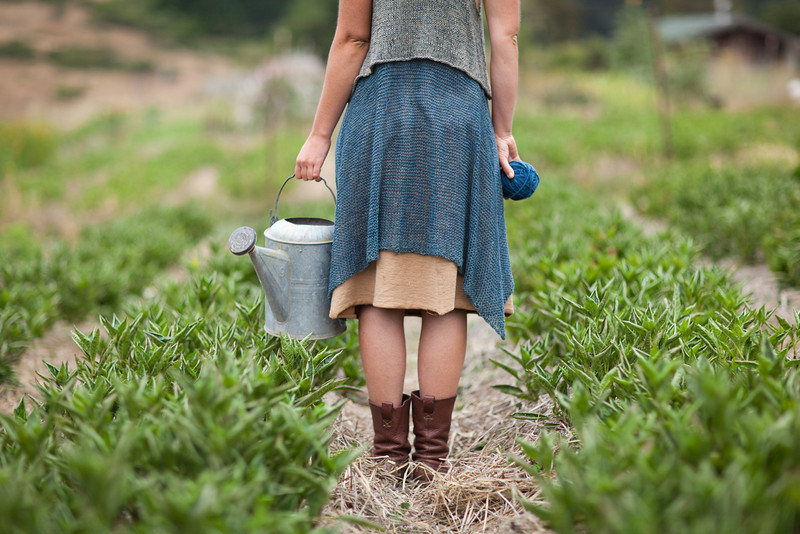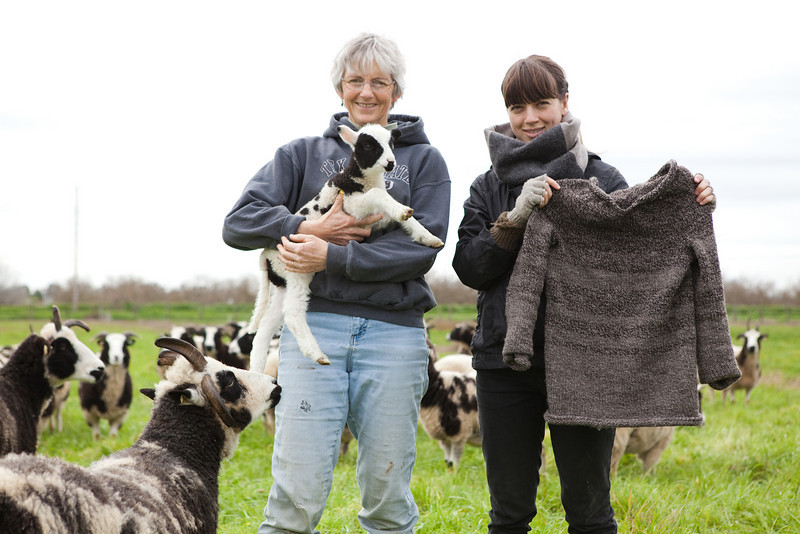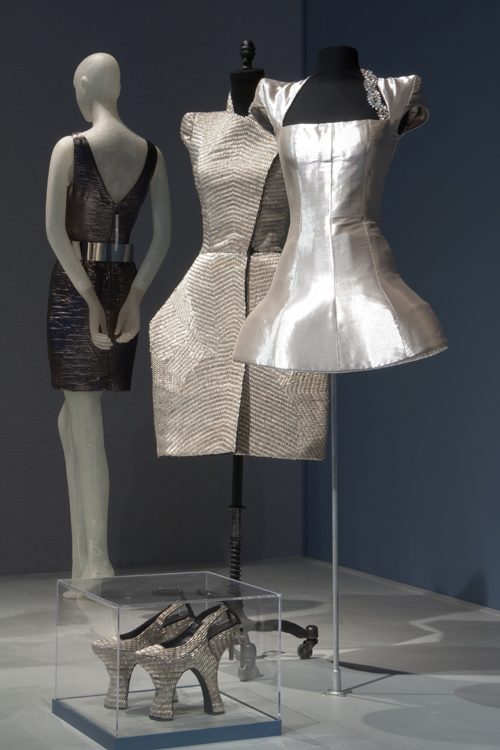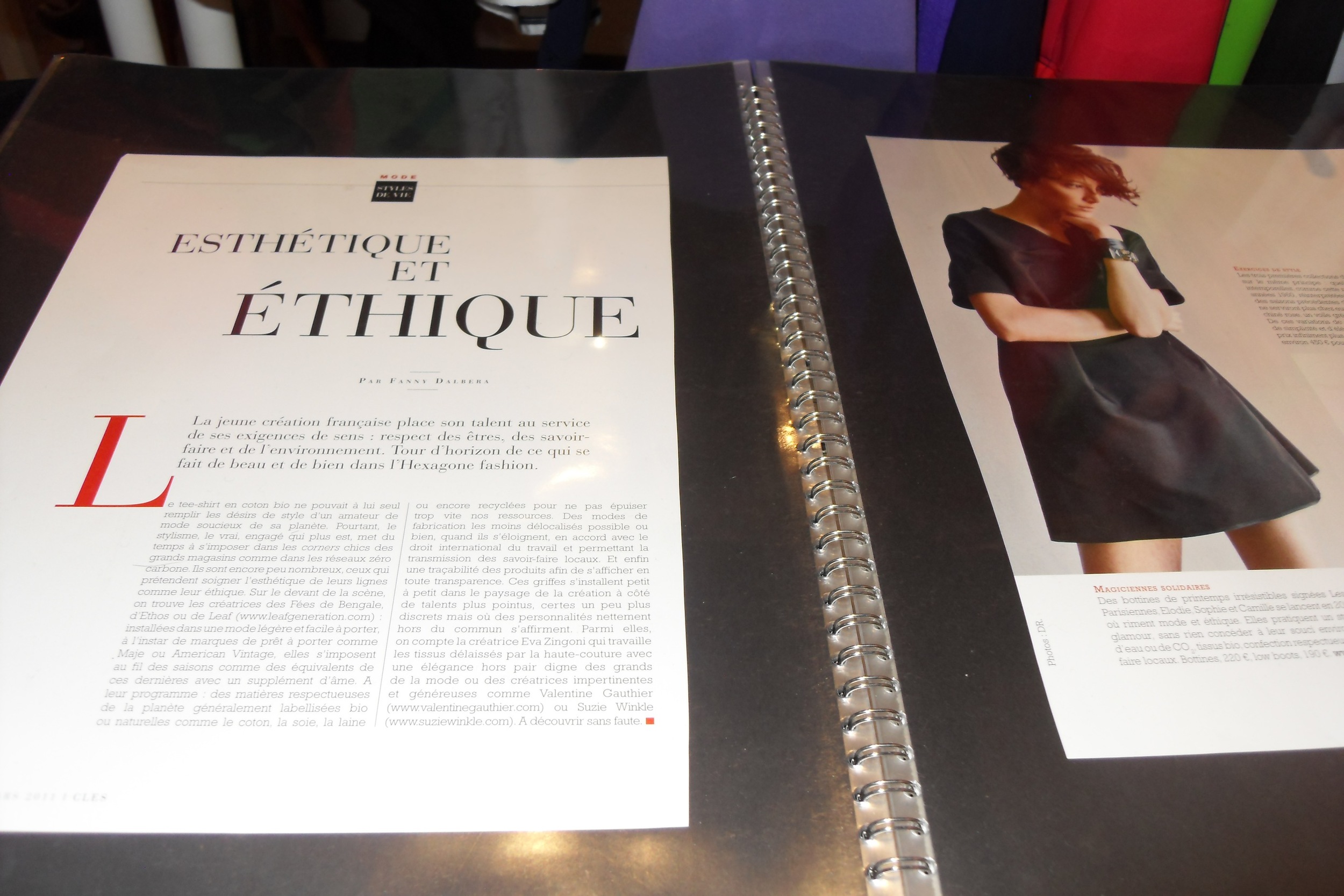Interview with Rebecca Burgess about her Vision for a Thriving Local Textile Economy
/Rebecca Burgess: What a Fibershed is, is taking responsibility for the biological context of your clothes. I’m interested in the revitalization of my community’s economy and green jobs, but I’m also interested in reconnecting to the plant and animal communities that are responsible for our clothes. It’s quite a beautiful narrative, if we could support it.
It’s a beautiful narrative, and an imperative, according to Rebecca Burgess. Burgess’ blog chronicles Fibershed-related events, projects, and the Fibershed Challenge: her quest to live for one year in clothes made from fibers sourced within a geographical region no larger than 150 miles from her front door. Her book, Harvesting Color, explains the dye potential of 36 plants, including pokeweed, elderberries, indigo, and coyote brush. Her restoration education curriculum gives children the opportunity to “investigate macro-environmental issues of our day” and “create solutions within their own landscape.” Finally, the Fibershed Marketplace website, to be launched later this month, will provide resources for those interested in starting their own Fibershed Project.
Somehow, Burgess also finds time to work on her 45-acre organic farm in Northern California, where she grows and harvests over 4,500 natural dye plants. She often does phone interviews from the farm: “I put my headset in, do my work, and answer calls.” Burgess works hard, fueled both by sheer enthusiasm and by a distinct sense of urgency. Her vision for a “thriving local textile economy” answers to a growing concern about the environmental, social, and economic impacts of the clothing industry. Likewise, the Fibershed model serves as both a functional and symbolic antidote to the prevailing system. Burgess’ commitment to local fiber reminds us of the physical labor involved in creating a garment from – as she puts it – “fiber to skin,” and forces us to reconsider the relationship between our bodies and our clothes.
RB: These little realities about living and working with plants and animals – it creates a difference in your body. I know this because I observed the changes in myself. You really learn how to work. It’s like systems theory; you can get a system to start producing good results if you get the pendulum swinging in the right direction. My body is different now; I’m sunburnt most of the time (even though I wear a lot of sunblock), but I’m strong, and I can endure long hours, and I have a much greater sense of confidence in what I can do physically because I see the product of my labor.
Tomorrow I’m driving up to the Capay Valley, where I have 2,000 indigo plants that I’m going to harvest. I’m going to be harvesting from nine to nine at night, and I’ll have six or seven days like that in the summer. Then once I harvest the indigo, I have to dry it all, stomp it, separate the stems, bag it, bring it back to the facility that I’m renting. This summer has been a lot of maintenance; I have to do a lot of gopher trapping at the farm. I’ve been dealing with irrigation problems, pressure valves, dripping stuff that’s not dripping the right way. I’m getting tired, but I’m building capacity.
MC: Do you see this as a creative outlet as well as a manual, physical experience?
RB: Creativity is definitely expressed through the body, and I get to use my whole body while I’m farming. I’m lifting. I’m carrying. I’m dragging. I’m walking around. I’m bending up and down. All of that is a form of self-expression because you’re making all these small decisions for yourself. You’re applying your own ideas and concepts second-to-second. It sounds like mundane stuff, but oddly enough for the modern person, this is new terrain – at least for me – to have a total flow out on a land base, being out on 45 acres of organic farm, working.
MC: Do you see yourself as part of a movement of people interested in local textiles?
RB: I see myself as part of a continuum, a historical continuum, around textiles in this area. In my region, a lot of retirees started raising sheep and alpaca, but not a lot of people were raising fiber for money. When ‘fibershed’ became a useful word for people, and the community at large, some of those who’d been doing it a long time started to become recognized in a new way, and to feel the power behind what they were doing.
MC: On your website, you state that your mission is to “go beyond the one-year wardrobe and create a thriving local textile economy.” What do you see this thriving local economy looking like?
RB: A thriving local textile economy would include current and existent land-owners working with young people, putting second housing on their land – for example, green modular trailers with solar panels. If farmworker housing were a top priority, we could start training people who don’t yet have the skills, but have the energy [to begin farming]. The really important thing is continuity, and the only way to cultivate continuity is to put young people in proximity to people who have the skills.
But on a macro level, from a very specific supply chain perspective, we need to be able to take our wool, alpaca, mohair, then cotton, and eventually bast fibers (linen, hemp), and mill them at small-scale milling facilities that can be run off of solar technology. There hasn’t been farm-based milling equipment designed for fibers except for wool, and there’s very little farm-based milling equipment for wool even, but for cotton it’s almost nonexistent, and for bast fibers – I have to put a call out there to anyone who understands how to engineer bast-fiber processing equipment and can scale it down to a farm size.
Pre-industrial revolution, we were relying on massive manpower, indentured servants, slaves. Now we’re in a new era. If we go back to a human-powered economy, this can’t be about indentured servants and slaves. It has to be about cooperatively owned businesses, about people working for the common good – that’s how we’re going to inspire people to get involved in this. We need equipment that honors our humanity; we’re not going to be slaves to technology, but we’re also not going to be slaves to each other. We need this new human-scale technology combined with continuity of the generations. We already have world-class fibers. We have no lack of fiber, but there’s no processing equipment in my region, so all of those pieces – how to get the wool off the sheep, how to wash it, how to card it, how to blend it, spin it – all of this needs serious improvement. To me, it’s about enhancing human infrastructure, technological infrastructure, and communication. We’re talking about a revitalization of the whole economy when we talk about the revitalization of a Fibershed.
MC: Do you have any recommendations for people interested in learning more or starting a similar project?
RB: The website that we’re going to launch in the next week and a half will have a reading list and the protocol that we followed. We started a one-year challenge, so we had a prototype wardrobe. I started a Kickstarter campaign. How did I organize farmers and artisans? I used Google Docs. I used Doodle Calendar. I did community-building projects where instead of charging for workshops, I gave free classes for artisans and farmers, to bring them together. You need to be able to build a network. You also have to be in good health, because it takes a sound mind and body to create these networks and keep them alive. It’s kind of like running a marathon in the beginning.
Mae Colburn is an independent textile researcher and writer and professional seamstress based in Santa Fe, New Mexico.
Rebecca Burgess is an ecological restoration educator, curricula developer, author, and textile artist and a fifth-generation resident of the watershed where she works in Northern California.















